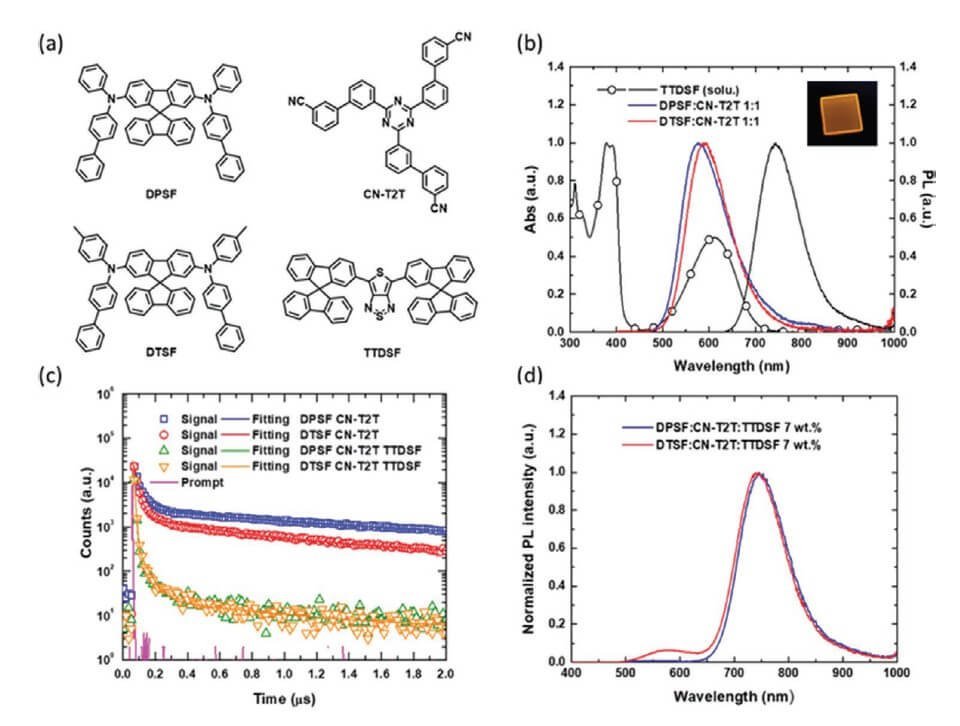New Exciplex-Forming Co-Host System and Thienothiadazolebased Fluorescent Emitter for High-Efficiency and Promising Stability Near-Infrared OLED
Yi-Sheng Chen, Dian Luo, Wei-Chih Wei, Bo-Lin Chen, Tzu-Hung Yeh, Shun-Wei Liu, and Ken-Tsung Wong
Adv. Optical Mater. 2021, 2101952
Prof. Wong and colleagues at the National Taiwan University tailored a special blend of organic molecules to reach a remarkable efficiency. This work is a perfect example of how to fine-tune the OLED emission via a combined simulation/experiment approach.
The team developed spirobifluorene-cored (SF) donors and blended them with CN-T2T acceptor for exciplex formation. This combination gives an electroluminescence peak at 584 nm. The emission increases to 760 nm with the further inclusion of the fluorescent emitter TTDSF. An optimized microcavity effect brings the emission to 774 nm.
The simulation software Setfos from allowed them to find the optimal thickness of the acceptor material (or ETL), and to optimize the optical cavity. The researchers measured an impressive EQE of 5.3% and stable performance of almost 300 hours for the optimized device.

